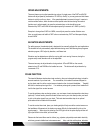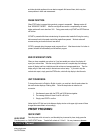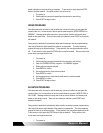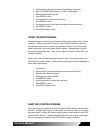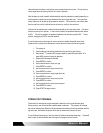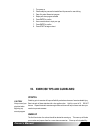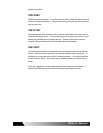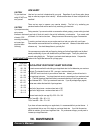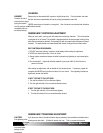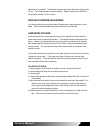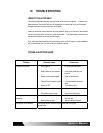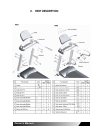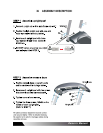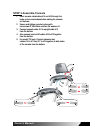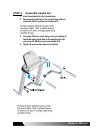
Owner’s Manual
27
HOW HARD?
How hard you work out is determined by your goal. Regardless of your fitness goals, always
begin an exercise program at low intensity. Aerobic exercise does not have to be painful to be
beneficial !
There are two ways to measure your exercise intensity. The first is by evaluating your
perceived exertion level and the second is by monitoring your heart rate.
During exercise, if you cannot maintain a conversation without gasping, you are working too hard.
A good rule of thumb is to work to the point of exhilaration, not exhaustion. If you cannot catch
your breath, it is time to slow down. Always be aware of other warning signs of overexertion.
To monitor your heart rate you can use a pulse monitor or take your pulse with your fingers.
Pulse monitors are convenient tools for monitoring your heart rate. However, these values are for
reference only. You should always listen to your body first.
You can measure your pulse with your fingers by placing your first two fingers lightly over the blood
vessel (carotid artery) on your neck located next to your Adam’s apple. Count your pulse for ten
seconds and multiply by six. This figure is your heart rate in beats per minute. Compare this
number to the Target Heart rate zone for your age group.
CALCULATING YOUR TARGET HEART RATE ZONE
The most common method for calculating your target heart rate is to first determine your maximum
heart rate. The standard formula is: 220 - your age = maximum heart rate.
You DO NOT want to work out at your maximum heart rate. Instead, you should work out in
your target heart rate zone. Your target heart rate zone is a percentage of your maximum heart
rate. The AHA (American Heart Association) recommends working out at a target heart rate
zone of between 60% - 75% of your maximum heart rate. If you are just beginning a program,
exercise near or below the lower limit of your target zone.
Lower limit of target zone = maximum heart rate x 0.60
Upper limit of target zone = maximum heart rate x 0.75
Maximum heart rate (for user age 30) = 220 – 30 = 190
60% of max HR = 190 x .60 = 114
75% of max HR = 190 x .75 = 142
If you have not been exercising on a regular basis, it is recommended that you start slower. It
may be advised that you use 114 to begin as your target heart rate. If you find this pace too
difficult to maintain, go to a lower target heart rate. As you become stronger, you may want to
increase your target heart rate.
VIII. MAINTENANCE:
CAUTION!
For your health and
safety, DO NOT over
exert yourself.
CAUTION!
If you experience chest
pains, nausea,
dizziness or shortness
of breath, STOP
exercising immediately
and consult your
physician before
continuing.
TARGET HEART RATE
Age Target Zone
( 60% - 75% )
20 120 - 150
25 117 - 146
30 114 - 142
35 111 - 138
40 108 - 135
45 105 - 131
50 102 - 127
55 99 - 123
60 96 - 120
65 93 - 116
70 90 - 113




